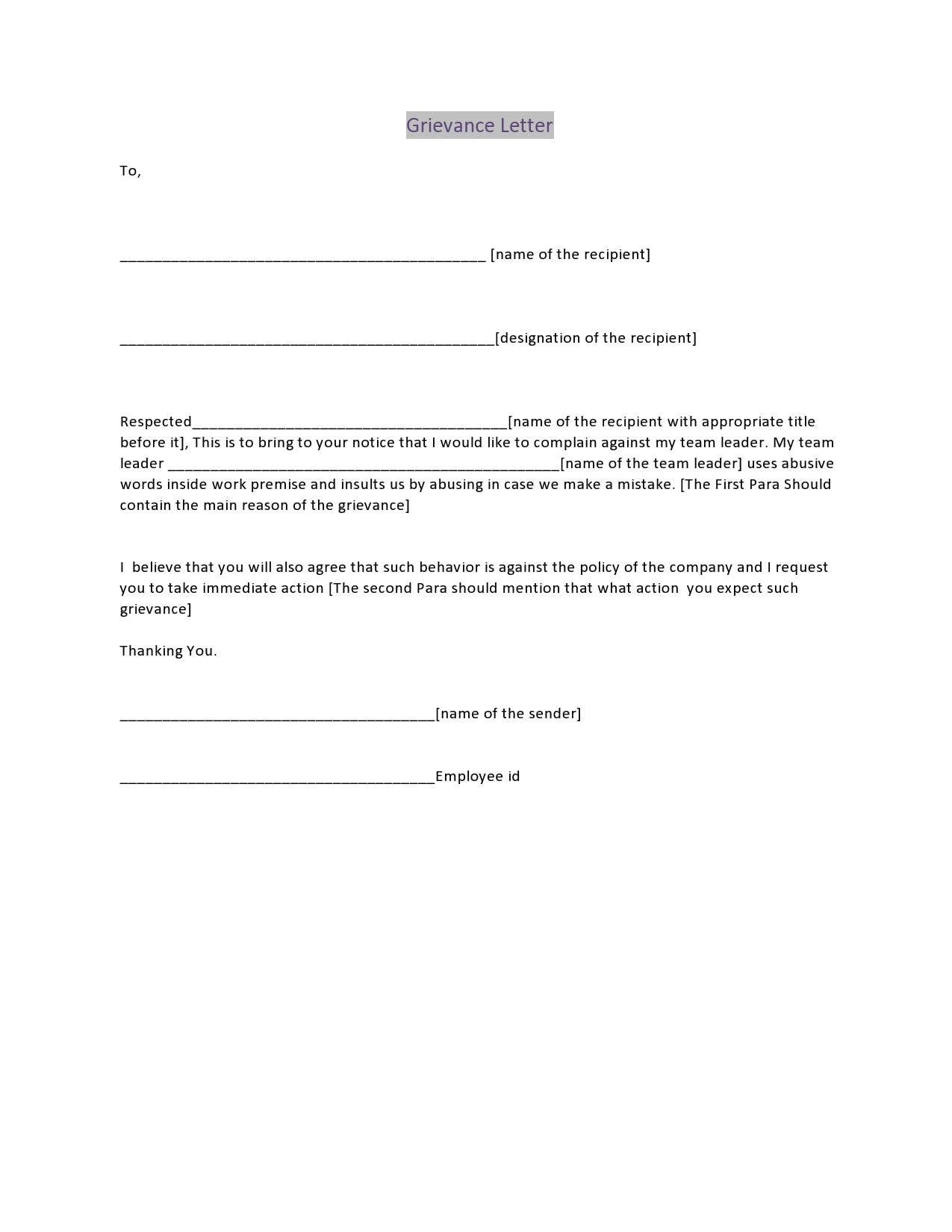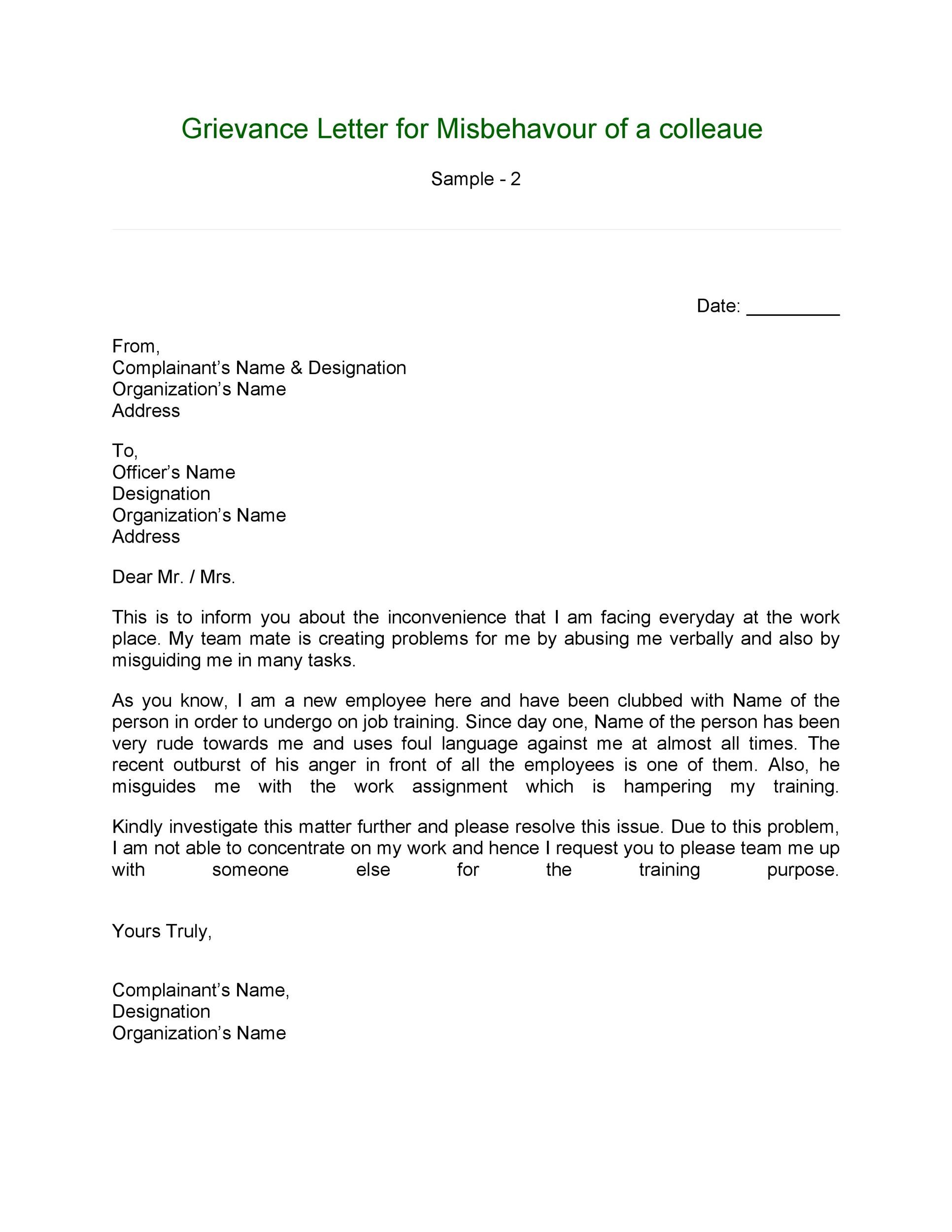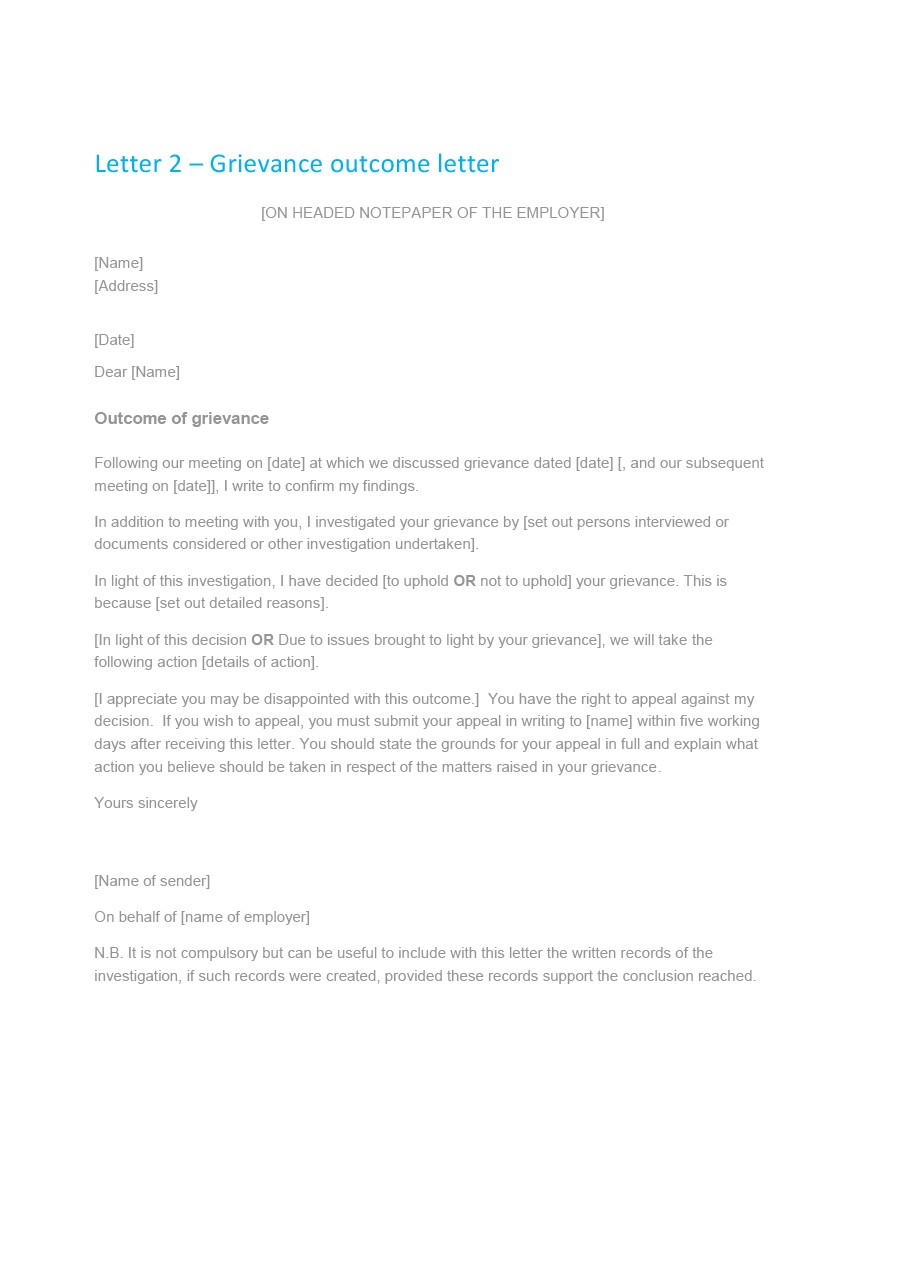Supreme Tips About How To Start A Grievance Letter

Grievance letters offer employees who have complaints regarding a situation (s) at work with an effective and.
How to start a grievance letter. 555 five boulevard austin, tx 73301 You can copy and paste the template text. Describe the problem.
A grievance is a letter of complaint to your employer. State the desired remediation.
Understanding the purpose of your grievance letter a grievance letter is more than just a complaint; The people you care about will be happier too. A grievance is a formal written complaint that alleges wrongdoing, and you can file one by completing and filing the appropriate forms.
It’s a formal document to address serious issues in. Keep the contents of your letter to the point. Beware of the template letter.
How to write a formal complaint letter about a coworker. Begin the letter by summarizing the details of your termination, including when it happened, who did it, and the reason, if any was given. Much more likely is that it will be in your interest, if you have a complaining habit, to break it.
Provide a brief summary of events leading up to your complaint as. Present a detailed account of the problem, including specific instances, individuals involved, and any supporting information you have. Formal letter of grievance in line with the acas code of practice on disciplinary and grievance procedures please consider this correspondence to.
How you present your grievance letter may be very helpful in resolving the issue more quickly. Make sure the letter is addressed to the right person. The final section of the letter includes what you think should happen next and a specific remedy, if possible.
If not, send it to your manager. Your employer’s grievance procedure should set out the person who deals with grievances. Use a simple, professional, complimentary close, such as sincerely or regards.
Provide enough details in your letter so that your employer can investigate your grievance properly. A template letter for employees to use to raise a formal grievance with their employer. Although there is no legally required wording, you need to make clear that this is a formal grievance, for example using:
Writing a grievance letter checking you've included the right information if employers or employees do not follow a formal procedure not following a formal grievance procedure. It is also important to recognise the risk of using template response letters when dealing with a grievance. If you are an employee and you want to make a formal complaint about something which has happened at work, you should raise a grievance.


















